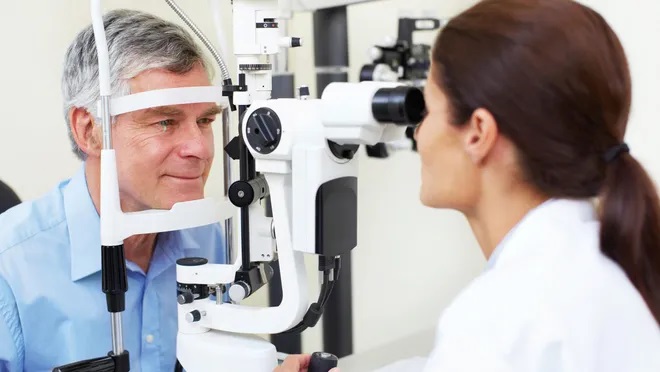
13, Aug 2024
The human eye is a delicate organ requiring proper attention and care. Ocular conditions like cataracts, glaucoma, macular degeneration, and diabetic retinopathy can affect your eyesight. Many of these conditions don't have obvious symptoms until their advanced stages, making regular eye check-ups even more crucial.
The eyes also serve as a window to our inner health. It would help if you took your eyesight seriously. Routine eye exams may reveal not only visual problems but other issues like high blood pressure, diabetes, and even some types of cancer.
National Eye Exam Month, observed annually in August, reminds us that comprehensive eye exams are essential preventive health care for everyone to maintain good eye health and detect eye problems early.
Annual eye exams are recommended at the age of 65. Adults between 18 and 65 should get an eye exam at least every two years.
However, you should get your eyes checked more often if you have certain risk factors, like a family history of ocular disease. This underlying chronic medical condition puts you at risk for eye disease, like diabetes, wearing glasses or contact lenses, an occupation that's highly demanding visually or has a high potential of being hazardous to the eyes, belonging to specific racial and ethnic groups, systemic health conditions with potential ocular manifestations.
Individuals with diabetes, high blood pressure, or a family history of eye disease should begin having eye exams as early as possible and follow their doctor's recommendation for frequency.
Conditions like glaucoma and macular degeneration become more significant concerns as patients age, hence the need for annual exams at age 65. For these and other retinal conditions, optometrists work closely with their ophthalmology counterparts to determine the right course of treatment and refer out as needed.
A comprehensive eye examination includes various tests to identify potential issues affecting your vision. The components include obtaining medical history, including vision changes, current medications, work environment and overall health.
Visual acuity tests involve reading a Snellen eye chart with decreasing sizes of letters as you move down the chart.
Preliminary tests include tests of specific aspects of vision like perception of depth, color vision, eye muscle movements, peripheral vision, and pupillary response to light.
Keratometry tests measure corneal curvature, the clear outer surface of your eye, which helps diagnose conditions like astigmatism.
Refractory assessment determines the lens power you need to compensate for any refractive error (astigmatism, nearsightedness, or farsightedness).
Other examinations include eye focusing and eye movement testing, which involves focusing at a small object at varied distances and tracking a moving object.
Examining your eyes' external and internal parts detect signs of common health conditions, like glaucoma or macular degeneration. Your eye doctor may dilate your pupils to see the inside of your eyes more clearly.
It is never too late to get your eye examined. For any patient needing immediate attention, the best first step is to call your primary doctor, who can quickly arrange a consultation with an optometrist or an ophthalmologist for a complete eye exam appointment.
Dr. Sue Mitra and her staff strive to offer their patients the best care, advice and services available in the medical field with the goal to keep patient healthy & happy.

Dr. Sue Mitra is board certified in international medicine. She is seen here with a Cologuard, which is a noninvasive colon cancer screening test. (Photo by: Tim Shortt/Florida Today)